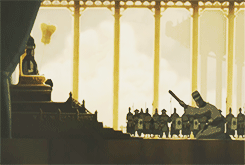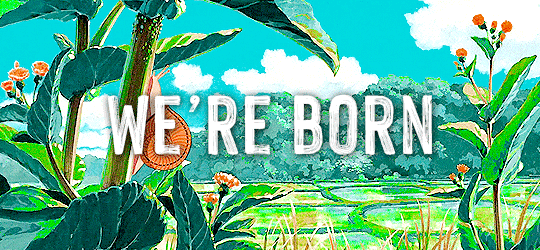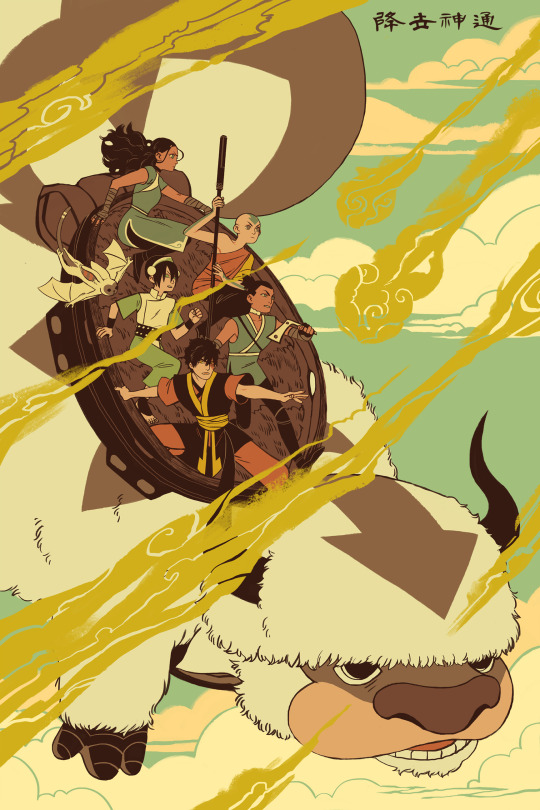Text
Episode 14 Show Notes – What’s the best Cinderella movie?
Have you guys noticed how many times the story of CInderella has been adapted to screen? We sure have! As two people who love fairy tales, movies, and feminism, we thought it’d be perfect to spend an hour discussing our favorite Cinderella movies -- animated, historical, and otherwise. We had some broad categories, which we used to pick a diverse set of four movies to discuss, which are:
Disney’s Cinderella (1950)
Ella Enchanted (2004)
Ever After (1998)
A Cinderella Story (2004)
For each film, we looked at how it compares to the fairy tale formula (Perrault or Grimm, whichever flavor you prefer), how good it is, its intersection with feminism, and much more. Now that you’ve listened to the episode (which you have, right?), let’s get into these show notes!
Option A: Disney’s Cinderella (1950)
We think Cinderella gets a bad rap as a horrifically anti-feminist story about a girl who allows herself to bullied. However, The Take has a great...uh, take about why that’s reductive in their video essay “Stop Blaming the Victim.” We recommend this video essay and also this movie - Cinderella is sassier than you remember!
Also, we wouldn’t be us (read: Sophie wouldn’t be Sophie) if we didn’t talk about historical costuming! Frock Flicks has a post about Cinderella and its ambiguous time period.
Option B: Ella Enchanted (2004)
Ella Enchanted (2004) is a very enjoyable romp that never takes itself too seriously. It’s kinda barely a Cinderella story, as we discuss in the episode, and ever more barely an adaptation of the novel by Gail Carson Levine. So the main takeaway is: Read the book! Book Riot has done a great piece on the differences between the two and the strengths (and weaknesses) of both.
Option C: Ever After (1998)
For this section we are happy to tell you that there is an entire fan-created website dedicated to the costuming of this movie. Please bask in its glory. In addition, we cannot skip recommending the Frock Flicks write-up, which gives an amazingly detailed analysis of the costumes of the film.
This film, as well as Disney’s Cinderella, are featured in this Mary Sue article about the feminism in Cinderella movies. Don’t forget to check out our minisode for our thoughts on Disney’s live-action Cinderella as well!
Option D: A Cinderella Story (2004)
As this is not a historical movie, we sadly have no costume analysis for you. What we can give you is the Rotten Tomatoes page, tempered with our whole-hearted recommendation of this movie as a feel-good romantic story. Also, Jennifer Coolidge is an icon.
Thanks so much again for listening, and be sure to tune in January 6 for the beginning of WIDPC season 2!
1 note
·
View note
Text
Episode 15 Show Notes - What’s the most interesting Western holiday tradition?
Happy Holidays!
Or, if you live in America—where you may or may not be soaked to the bone in eggnog and/or “Judeo-Christian” (read: WASP) culture and ideology—Merry Christmas!
Let’s be real, Christmas is a weird holiday. That’s before even getting into how Jesus was probably born in the spring and how both Saturnalia and Yule were way more lit. For one thing, Americans are very weirdly obsessed with it. We go ham for a lot of holidays (see: Thanksgiving, Fourth of July, the Super Bowl) but for Christmas people pull out the stops and, more and more these days, hang up the lights as soon as Halloween has rounded the corner.
For another thing, many of the markers of Christmas that we consider “traditional” are (1) kind of weird, and also (2) have some strange and obscure origins. In this episode (go listen. Do it), we dug into four of these traditions:
A) Caroling
B) Mistletoe
C) Gingerbread
D) Stockings
As always, we assume you’ve listened to the episode before reading the shownotes, so let’s get into it!
Option A: Caroling
Caroling, like many of the traditions we talk about in this episode, is probably something we see more in movies than in real life. This wasn’t always the case, though! Caroling has a long folk tradition of spreading good cheer and also spreading good fortune.
“Wassailing,” as you might have heard this practice called in some old carols, has had a tumultuous journey to reach its current definition. From a greeting, to a drink, to giving people a drink, to being paid for giving people a drink, wassailing (and, more to the point, caroling) had nothing to do with Christmas at all in the beginning.
However, with the Protestant Reformation, old secular carols got new lyrical facelifts and became a part of religious celebration during the Yuletide season. Some carols still slipped through the cracks of Christianization, but overall carols have become firmly entrenched as part of the American Christmas landscape.
Option B: Mistletoe
Mistletoe! What could be more romantic than a poisonous berry most remembered in history as looking a lot like semen?
Like with caroling, this tradition has nothing to do with Christmas itself and everything to do with the topsy-turvy-ness of the Yuletide season. Servants receive gifts from masters, the rich are poor, and servants could steal kisses from each other on the job or risk bad luck.
Check out this article for an overview of the Norse perspective on mistletoe as well as its evolutionary history (again: sticky white poison).
Option C: Gingerbread
Long before it was drying out on your kitchen counters, gingerbread was an exotic import from the Far East, imported to Europe via the Silk Road around the 11th century.
What began as a novelty snack soon ballooned into an aristocratic flex, invading the court of Elizabeth I and spawning honest-to-God guilds in its wake. The gingerbread man, a footnote for many Europeans, has become an icon of American Christmas, thanks to a successful PR campaign including a fairy tale, a rap-musical, and a starring role in a famous Dreamworks franchise.
Option D: Stockings
Why on earth would children want to receive gifts in socks? The most common origin in the myth of St. Nicholas and Dowryless Sisters (title mine). But regardless of its origin, it’s obvious that this tradition has some staying power; the cheap polyester foot-shaped-bag industry is still going strong.
In this part of the episode, we also discuss the industry of magical eldery figures who invade homes via fireplace. This archetype is bizarrely common across many cultures. So maybe the true Christmas was the fireplace grandpas we learned about along the way.
Thanks so much for listening, and we’ll see you in January for the 3-episode opening week of Season 2!
0 notes
Text
16 Show Notes - Which would be the worst horseman of the apocalypse?
Welcome to the end of the year and, more importantly, the end of WIDPC’s first season! To celebrate, we decided to wrap Season One by talking about the biggest end—the End, capital E. (Episode here if you haven’t listened to it yet.) We know it’s coming—we’re millennials, after all—and clearly the best way to cope with times like ours is to spend an hour discussing what would be the absolute worst way to go. (Again, millennials.)
Our answer choices are:
A. Pestilence
B. War
C. Famine
D. Death
First, let’s knock this out of the way—yes, we know the first horseman is technically Conquest, not Pestilence. At least according to the King James version of Revelation 6:2, wherein the first horseman has a bow and crown and explicitly “went forth conquering, and to conquer.” But (1) Pestilence makes for a more diverse selection of end-time scenarios, and (2) we figure you can interpret this horseman as disease, since disease strikes people like arrows and can affect or “conquer” pretty much anyone.
Now that we’ve got that bit of pedantry out of the way, let’s dig into it!
Option A: Pestilence
In the episode, we discussed a lot of different ways disease could bring about an end-times scenario. In an attempt to minimize alarm, we’re just going to link the sources we drew on while talking about how likely it is that human civilization as we know it will go out via disease.
Check out this article for more on how climate change and good ole human curiosity may be defrosting old diseases from the (not so) permafrost.
Also, don’t forget that measles and polio are back, even in OECD countries, due to the anti-vaccination movement.
Old diseases could also come back as a tool of biological warfare! There are still samples of the world’s deadliest diseases in labs all over the world, kept mostly for science purposes. But we’ve all seen Jurassic Park. We know.
And lest you are a non-human reading this and thinking you are safe, remember that disease does not affect humans alone. Plant and animal diseases like the so-called “olive tree leprosy” exist and pose a serious threat to your habitats and food supplies!
…Oh did we say minimize alarm? We meant maximize. Merry Christmas!
Option B: War
This horseman, dear friends, is already upon us, and has been to Earth more times in history than we could possibly count. Since you can find way more than we could ever tell you in the History/Military History section of your local bookstore, we thought it’d be more interesting to focus on some aspects of warfare that you might not have considered.
Specifically, we were interested in unconventional tactics of warfare, such as cyber-attacks on important systems. As sci-fi as that sounds, Ukraine’s power grid was hacked in 2016, leaving about 230,000 people without power in the dead of winter. The hackers disabled not only the distribution stations and substations but also backups and fail-safes, crippling the people normally in charge of responding to such emergencies. We don’t know about you, but we think that’s pretty scary stuff. You can read more about infrastructure hacking here, here, and here.
Another aspect that’s super interesting (and super terrifying) is the relationship between warfare and the natural environment. Environmental damage is both a weapon of warfare and a major fallout. One of the best-known cases is World War I, which was the first war to cause such drastic environmental destruction. We’re still learning about the impact of the deforestation and toxic materials left behind in Europe, but there are also bright spots: nature does seem able to bounce back, as it has in vacated areas such as France’s Zone Rouge. You can go here and here to read more.
Option C: Famine
Like War, Famine is already out among us. A major famine that’s currently in the news a lot is the one in Yemen, where they’re facing such a severe shortage of clean water and food that citizens were apparently thrilled to get a plague of locusts in October, because those things pack a lot of protein.
One major thing that we think a lot of people miss about famine, and that we discuss in the episode, is that it’s just as much a human phenomenon as a natural or environmental one. Sure, things like natural disasters, crop failures, and plant/animal disease can create conditions of scarcity, but it tends to be human actions—habitat destruction, warfare, and willful neglect of the vulnerable—that causes people to starve to death. For an in-depth historical example of how that works, we recommend William Rosen’s The Third Horseman: Climate Change and the Great Famine of the 14th Century, which looks at one of the worse famines in English history. For more recent history, you can look at the Bengal Famine of 1943, wherein Britain killed millions of Indians by refusing to stop exporting Indian rice or provide relief. You can also look at the very recent water crises in Flint and Newark, which will have ramifications for years to come.
Further reading for some of the stuff we mentioned in the episode:
You can read more about the fallout of the California power shutoffs here, here, and here. While it’s true that PG&E shut off power due to safety concerns—they didn’t want their equipment causing or exacerbating wildfires—we think you’ll agree that you shouldn’t have to choose between having electricity and not dying/losing your family and property to wildfires. Not in a day and age when underground power lines and other safety measures exist.
We also touch on the awesome R&D coming out of Africa that is changing the game for water acquisition and purification. These include a device that pulls water from the air and new formulas for carbon water filters. You can also get more of a bird’s-eye view here and here.
Option D: Death
Obviously, we’ve covered Bad Ways to Die in all the previous answer choices, so for Death itself we thought we’d look at it the way Revelations’s author probably meant it: the big stuff, mass extinctions and such. The kind of calamities covered by the “Acts of God” clause buried in your insurance paperwork.
It’s probably not so hard to believe in these things when climate change is a thing. In addition to being generally terrifying, climate change may also lead to mass extinction by destabilizing our water supply (and thus our food supply), killing or displacing millions of people currently living in coastal cities, and also by acidifying the oceans, which will quite literally cause a massive amount of marine species to go extinct. As we discuss in the episode, one of the most important of these species is phytoplankton, which accounts for anywhere between 50 to 85% of the oxygen in our atmosphere and is also one of the major reasons our CO2 problem isn’t as bad as it could be. If they die, though…
Furthermore, we couldn’t possibly talk about mass extinction events without talking about meteorites. (Meteorites? In my atmosphere? It’s more likely than you think!) These can, in fact, cause mass extinction; just look at the Cretaceous-Tertiary meteor of dinosaur-eradicating fame. A Tulane University study estimated that, based on the geological record, over 50% of all species existing on earth at the time were wiped out by the impact of that crash. Even when they don’t touch Earth’s surface, meteor explosions can have the force of a nuclear or atomic bomb. And even when they don’t get quite that close, they are perfectly capable of causing massive damage and injuring/terrifying thousands of Russians. So they’re nothing to be sneezed at, no matter how far-fetched it might seem.
To read more about the efforts currently underway to defend Earth from meteor impacts, you can go here, here, and here.
0 notes
Text
13 Show Notes - What’s the worst trapping of modern femininity?

Patriarchy ahoy!
This week is all about the trappings of modern (especially American) femininity that women and femme people deal with on the daily. Our answer choices are:
A. Makeup
B. High heels
C. Bras + underwear
D. Hairlessness
Before moving onto the show notes, remember to check out the episode itself!
Option A: Makeup

Makeup is old as time. But it wasn’t always associated with femininity: throughout history and around the world it’s also been a signifier of social class (or lack thereof). It has also, contrary to popular belief, been very, very popular among men for a long time, and is only recently regaining that level of popularity among men after the double whammy of those damn Victorians and the unholy marriage between Hollywood and capitalism.
And if you think we’re exaggerating about the social consequences a lot of women face for not wearing makeup, check out this article and this study. If you, like Sophie, hate doing makeup and only want the bare-minimum basics on occasionally using makeup for personal gain, check out this tip sheet. And if you’re like fuck it, you don’t want to put on makeup at all—that’s legit and we at least will support you!
Option B: High Heels

Okay, so we have a correction to make: the iconic red-soled Louboutin heels were not directly inspired by French king Louis XIV as we say in the episode, although it is true that Louis made them hugely popular and limited red soles to the noble classes. According to Christian Louboutin himself, however, the red soles came from something much more mundane: a bottle of red nail polish belonging to one of his assistants, which caught his eye at just the right moment. You can read more about it here and here.
For more on Alexander Hamilton, his nice legs, and the 18th-century love (or perhaps not) of calves, check out this article.
For more about how high heels went from a men’s shoe to a women’s shoe, check out this article. If you’re interested in how the Enlightenment and the French Revolution changed ideas about gender expression in fashion, you need to check out this pair of episodes [1] [2] of Dressed: The History of Fashion, a great podcast run by people who know a lot more than we do about fashion history!
Other sources we used for this section: [1] [2]
Option C: Bras & Underwear

First, if you want to really dig into the history of lingerie and bust support, be sure to check out our episode on this exact topic and our show notes for sources and pictures!
This episode goes a little more into the more recent history of bras and how we view them in Western (especially American) culture. For more on how lingerie went from shameful unmentionables to “sexy,” check out this article and this one.
Option D: Hairlessness

Ah, hairlessness. How we hate thee. Partially because (as discussed in the episode) it’s a pain to maintain, but also because it’s basically a huge con by the beauty industry that has morphed into a de rigeur for a lot of women. Especially, as with makeup, those working in the service industry and other fields where they have to People regularly.
For more on the history of shaving and hairlessness, check out these articles: [1] [2] [3]
As always, thanks so much for listening! We’ll see you again in a few weeks, when—drumroll please—we will be closing out our very first season with another three-episode extravaganza, just in time for listening to during your holiday travel and while hiding from obnoxious relatives. Happy listening!
0 notes
Text
12 Show Notes - What’s the best historical reference in Avatar: the Last Airbender?
Strap into your flying bison because this episode is a doozy!

This week’s question is: What is the best historical reference in Avatar: The Last Airbender?
A. Chin the Conqueror
B. The Order of the White Lotus
C. The Dai Li
D. Tenzin & Monk Gyatso
First of all: it is a cardinal rule of the universe that one cannot talk about history and ATLA in the same breath without mentioning the amazing work that has been done over on ATLA-Annotated https://atla-annotated.tumblr.com, where you will find not only translations of all the Chinese used in the show but also exhaustively researched posts about everything from the clothing styles to the architecture seen in the show.
In the episode, we mentioned an upcoming (at the time) series about Avatar Kyoshi. That series is now out, and it’s called The Rise of Kyoshi! Find out more here: https://www.abramsbooks.com/product/yee-nickelodeon-collaboration_9781419735042/ https://avatar.fandom.com/wiki/The_Rise_of_Kyoshi
As promised in the episode, we’ve included pronunciations for names were we could find them. Some had IPA and recordings available, while for others we only found transcriptions in Hanyu Pinyin, the standard transcription/Romanization system for Mandarin Chinese. Pinyin does give you all the information you need to pronounce something correctly, but it’s not the most intuitive for native English speakers. So here are some resources for how to use it for the names in this post: https://www.yoyochinese.com/blog/pinyin-beginners-guide-mandarin-chinese https://en.wikipedia.org/wiki/Help:IPA/Mandarin
Option A: Chin the Conqueror / Qin Shi Huang-di, the First Emperor

Here’s Qin Shi Huang in IPA: [tɕʰǐn ʂɨ̀ xwǎŋ]
And in Hanyu Pinyin: Qín shǐ huáng
And for those who don’t like reading either, here’s a recording: https://upload.wikimedia.org/wikipedia/commons/e/e4/Qin_shi_huang_pronunciation_2.ogg
Our main source for the IRL Qin conqueror was Mark Edward Lewis’s The Early Chinese Empires: Qin and Han, which goes into the origins of the pre-imperial state of Qin, its militarism and legalistic policies. If you want to learn more about the man himself, we’ve previously referenced Jonathan Fenby’s The Dragon Throne: China’s Emperors from the Qin to the Manchu for its comprehensive coverage of Chinese imperial history and the chapter on the Qin dynasty is just as solid.
One of the major primary (sort of) sources that we have is Sima Qian’s Records of the Grand Historian, which you have probably heard Sophie reference before, and which we will draw on again in future episodes. This is because it’s one of the richest sources available to us on early Chinese history, written by Sima Qian [sɨ́mà tɕʰjɛ́n] over a lifetime. It’s this historical tome that contains one of the best-known stories about the First Emperor, which is that he burned books and killed scholars. As powerful as such a story is, it’s unclear how much of it is historical fact and how much of it is a Han dynasty with an axe to grind and a predecessor to discredit. For more on this academic debate, you can start with this article: http://ulrichneininger.de/?p=461.
For those more interested in the myth than the man, Sophie mentions the film Hero, a 2002 film by Zhang Yimou starring Jet Li, Zhang Ziyi, and Donnie Yen among others. On top of being a really intriguing film full of mind games, it is! So! Pretty!
Now: back to the show! If you want to learn more about the adventures and misadventures of Avatar’s Chin, the Avatar fandom wiki is a wonderful and thorough source: https://avatar.fandom.com/wiki/Chin
In the episode we also talk about the worldbuilding and political setup of the Earth Kingdom in general. For those who are interested, we can’t recommend Hello Future Me’s video about this very topic enough! https://www.youtube.com/watch?v=I-FNPuIM9jg
Other sources:
https://www.nationalgeographic.com/culture/people/reference/qin-shi-huangdi/
Option B: The Order of the White Lotus / White Lotus Society

In the original show, the Order of the White Lotus is a secret society, composed of many bending and martial arts masters across the four nations who are implied to be working together to end the Hundred-Year War. Near the end of the show, White Lotus members mobilize in force to liberate Ba Sing Se from Fire Nation occupation. The Avatar wikis have a pretty thorough compilation of the White Lotus’s exploits and history: https://hero.fandom.com/wiki/Order_of_the_White_Lotus https://avatar.fandom.com/wiki/Order_of_the_White_Lotus
The IRL White Lotus Society (Báiliánjiào in Mandarin) was also a secret society (or sect or cult, depending on who you ask). They were around for at least four hundred years—multiple sources record their involvement in the fall of the Yuan Dynasty in the mid-1300s as well as in the White Lotus Rebellion between 1794 and 1804. Some sources even include Zhu Yuanzhang (Zhū Yuánzhāng in Pinyin), the founder of the Ming Dynasty, as one of its members.
Like the fictional White Lotus, the historical society/sect apparently had traditional practices such as martial arts, medicine/healing, and meditation. The historical White Lotus also had a strong religious element; many of its beliefs were based on Buddhism and Taoism but with a smattering of Manichaeism (https://www.britannica.com/topic/Manichaeism) which—to vastly simplify some very old and complex beliefs—is defined by duality and struggle: light vs. dark, good vs. evil, and so forth. There may also have been elements of messianic belief/prophecy in the White Lotus religion—members believed that humanity in its current state had been corrupted and needed saviors to lead them to reconciliation with the good and divine. However, unlike the fictional White Lotus, which seems to be comprised of societal leaders and elites, the real White Lotus attracted people on the other end of the spectrum—women, peasants, and other marginalized populations.
To learn more about the historical White Lotus’s philosophies, practices, and history, check out Susan Naquin’s Millenarian Rebellion in China: https://kb.osu.edu/handle/1811/5983 and Elizabeth Perry’s article “Worshipers and Warriors: White Lotus Influence on the Nian Rebellion”: http://deepblue.lib.umich.edu/bitstream/handle/2027.42/68415/10.1177_009770047600200102.pdf;jsessionid=608E03C2AA7738C4B7F214F3763E17DD?sequence=2 .
Other sources:
[1] https://heathenchinese.wordpress.com/2015/01/03/millenarianism-pt-4-the-white-lotus-society-and-the-nian-rebellion/
[2] https://www.britannica.com/place/China/Buddhism#ref71731
[3] https://www.britannica.com/event/White-Lotus-Rebellion
[4] The book Sophie was reading that mentions the White Lotus was the one we mentioned in Episode 10, Arthur Cotterell’s The Imperial Capitals of China.
Option C: The Dai Li

In the show, the Dai Li are the shady secret police force that basically runs the Earth Kingdom capital of Ba Sing Se. Originally founded by Avatar Kyoshi, one of Aang’s past lives, to protect the city’s “cultural heritage” and “traditions,” by the time of the show they are associated with kidnapping, brainwashing, and political repression in the name of “stability” (“There is no war in Ba Sing Se,”etc.). https://avatar.fandom.com/wiki/Dai_Li
What you may not know as that the Dai Li, and especially their leader, Grand Secretariat Long Feng, are mostly likely inspired by Dai Li (Dài Lì in Pinyin), an IRL spymaster who was active in Republic-era China before dying under mysterious circumstances in 1946.
The main account of Dai Li’s life and exploits that we used comes from Kathryn Meyer & Terry Parssinen’s Webs of Smoke: Smugglers, Warlords, Spies, and the History of the International Drug Trade (1998), which is (as it says on the tin) about the illicit drug trade (mostly opium and cocaine). The whole book is a fantastic read, but you can find most of Dai Li’s shenanigans in Chapter 8, “Spies.”
For those who hate good books, you can find some more straightforward accounts of his life here https://chinachannel.org/2019/03/22/dai-li/ and here https://ww2db.com/person_bio.php?person_id=894. The long and short of it is that he rose from obscure poverty to work under Chiang Kai-Shek [ˈtʃæŋ kaɪˈʃɛk], the leader of the Kuomintang [ˌkwəʊmɪnˈtaŋ] or Republic of China, which ruled mainland China between 1928 and 1949. Dai Li ran the Military Statistics Bureau, also known as the Bureau of Investigation and Statistics or Juntong (Jūntǒng) for short, which was the front for the Kuomintang’s intelligence/security/secret police arm. Like his in-show counterpart, Dai Li’s reputation is one rife with foul play, assassination, and the prioritization of internal threats over external and arguably bigger ones.
The name of his rumored girlfriend, Chinese actress Hu Die (meaning “butterfly”) is pronounced Hú Dié. She was also known as Butterfly Wu. Dai Li died in a plane crash on the way to visit her, one stormy night in 1946—jury’s out on whether that was an accident or not.
Option D: Monk Gyatso & Tenzin / Tenzin Gyatso, the 14th Dalai Lama

This option is interesting in that the same historical figure is reference twice in the Avatar universe: both Monk Gyatso, Aang’s mentor, https://avatar.fandom.com/wiki/Gyatso and Tenzin, Aang’s son, https://avatar.fandom.com/wiki/Tenzin are references to the same figure: the current Dalai Lama, also known by the first two of his religious names, Tenzin Gyatso [tɛ̃ ́tsĩ càtsʰo].
You can read more about the Dalai Lama’s remarkable life here:
[1] https://www.britannica.com/biography/Dalai-Lama-14th
[2] https://www.dalailama.com/the-dalai-lama/biography-and-daily-life/brief-biography
As we mentioned in the episode, the Dalai Lama is officially an influential leader (but not the head) of the Gelug [ɡèluʔ] school of Tibetan Buddhism. He and his past lives are believed to be the reincarnations of the Bodhisattva Avalokiteśvara [ˌʌvəloʊkɪˈteɪʃvərə], or Chenrézik in Tibetan.
The connection between the Borjigin lineage and the Dalai Lama, which we touch on, is actually a really interesting one. According to Jack Weatherford’s The Secret History of the Mongol Queens, the word “lama” comes from a Tibetan word for “chief” or “high priest” and is a title given to spiritual teachers in the Tibetan Buddhist tradition. In 1578, two Borjigin descendants—Mongol leaders Altan Khan and Queen Noyanchu Junggen—gave the title of “Dalai,” a Mongolian word meaning “sea,” to the Tibetan lama Sonam Gyatso, making him the first Dalai Lama (“sea of knowledge”). Each of Sonam Gyatso’s subsequent reincarnations has borned the same title, including the Dalai Lama we know and love today.
Finally, in the episode we touched on the real-world and ongoing conflict between China and Tibet. Yes, the Fire Nation is much closer to imperial China than it is to Japan, although there are certainly semblances to Japan too. You can read more about that in ATLA-Annotated’s tag “The Fire Nation is not Japan” https://atla-annotated.tumblr.com/tagged/The+Fire+Nation+is+not+Japan and specifically this post: https://atla-annotated.tumblr.com/post/14206674362/on-the-fire-nation-tibet-and-the-genocides-the
If you’ve made it this far, thanks so much for reading and listening and we’ll see you in a couple of weeks!
#avatar: the last airbender#atla#history#the legend of korra#china#guys this episode was so much#SO MUCH#episode 12
1 note
·
View note
Text
There’s literally nothing better than a period drama dance scene

30K notes
·
View notes
Text
no offense, but what was the point of that cool older lady character in Spirited Away



except, you know, to make me question my sexuality at 12 during midnight rewatches as I looked at her weirdly pretty mouth and had Questions
136K notes
·
View notes
Text
11 Show Notes - What’s the best literary love confession?

Arthur Hughes, “The Sailing Signal Gun,” 1880-81 [source]
Before you go on and read the show notes, don’t forget to listen to the episode!
Option A: John Thornton, North and South by Elizabeth Gaskell
You can read Thornton’s confession in Chapter 24, full text here. (Yay public domain!)
The 2004 BBC adaptation is fairly faithful in terms of tone and progression, if not in content. But even if it does excise some of Thornton’s softer side, we’re still game to watch Richard Armitage being all handsome and smoldering and capital-R Romantic. (And let’s be honest here…who isn’t?)
Video: https://youtu.be/sBTpRA9VADw
Option B: Captain Wentworth, Persuasion by Jane Austen
You can read Wentworth’s confession in Chapter 23, here.
If you, like us, like to read other people yelling about things we love, you should also read this meta from Vox and this one from The Conversation on why the letter scene is so good.
With regard to adaptations, there are two main ones: the 1995 version with Amanda Root and Ciaran Hinds as Anne and Wentworth respectively, and the 2007 BBC version with Sally Hawkins and Rupert Penry-Jones. Unlike other adaptations in this list, the filmmakers have changed very little about the wording of the letter, although both versions shorten it, and the 2007 version scrambles it a bit. But they’re still Austen’s words, in their beautiful, swoon-worthy, shining glory.
Comparison graphics, because Sophie is a nerd with too much time on her hands:


Which adaptation’s take do you like better, Ciaran Hinds’s gravelly whisper or Rupert Penry-Jones’s clear declaration?
1995: https://youtu.be/NYSzac4mccA
2007: https://youtu.be/aZp-_cbPLoU
Option C: Prince Charmant, Ella Enchanted by Gail Carson Levine
You can read Char’s confession in Chapter 24 of Ella Enchanted, although this book isn’t in the public domain. L But please go give Gail Carson Levine (or, alternatively, your local library) some love and money!
As far as adaptations…there is a movie called Ella Enchanted, but we don’t know that we’d call it an adaptation per se. More like a work that is completely different in terms of tone that happens to be loosely inspired by the book. Certainly there are no letters exchanged between Anne Hathaway and Hugh Dancy (forgot he was in this? Me too). No letters, no love confession.
Welp. Their loss. ¯\_(ツ)_/¯
Option D: Katniss Everdeen, Mockingjay by Suzanne Collins
You can read Katniss’s confession at the end of Chapter 27 of Mockingjay, which sadly is also not in the public domain.
And of course, there’s a great big film franchise adapted from the books, and—surprise!—it does include the love confession scene. It’s faithful—there are only two lines of dialogue in the source material, after all—but without access to Katniss’s inner narration it’s kind of…meh? There’s not even kissing. Boo.
Video: https://youtu.be/qFoUkll81N0
#mutual pining#love confessions#jane austen#north and south#ella enchanged#literature#episode 11#show notes
3 notes
·
View notes
Text
I’m not sure if you guys have checked out our patreon lately, but we’ve recently decided to upload minisodes every other Monday. Which means we’re now posting new content every single week!
This week’s minisode is a bonus answer choice from last week’s episode on dynastic restorations, and patrons can find it here: https://www.patreon.com/posts/minisode-juan-de-30733043?utm_medium=social&utm_source=tumblr&utm_campaign=postshare
Also, we’ve now got our feet under us enough to start working on the outtakes backlog! I found the perfect sound effect, by Mastercard on SoundBible, so those will also be uploaded on Patreon.
See you guys next week for the new episode!
0 notes
Photo










“I don’t think we’re born with a natural tendency to protect the environment. I think it’s something we learn if we’re educated and brought up to have the manners to care for the world. At some stage in our lives, the greed factor became stronger, and that has led us to the horrible situation we’re in now. A CHANGE IS NECESSARY, and I believe my films convey that.“ - Hayao Miyazaki
103K notes
·
View notes
Text
10 Show Notes - Which dynastic restoration most deserves an epic movie/miniseries?

Look....we’re all thinking it....
Before going on to the show notes, don’t forget to listen to the episode!
Dynastic restorations have always been a very appealing fantasy--in tumultuous times like these, who doesn’t want a righteous leader to show up and set all things right in the world? Preferably one with mystical powers that enable them to accomplish the impossible, as well as a nice patina of grandeur inherited from some illustrious royal ancestor.
(Side note: in the episode, we promised to link the weird story of King Arthur’s conception and birth, because that’s a whole thing and he definitely qualifies as a dynastic restoration. Here you go.)
Of course, people like these are pretty thin on the ground, and even when they do get around to a glorious dynastic restoration, things don’t always go as planned. (See above.) But sometimes they’ve turned out better than expected, so we thought we’d take a look at some of the times in history where heirs have emerged to restore their families to power and glory.
Our answer choices for this week are:
the Eastern Han dynasty
the Umayyad dynasty
the Borjigin clan AKA Northern Yuan dynasty
the House of Stuart
Option A: Eastern Han Dynasty
Restored 25, China

Gentlemen in conversation, Eastern Han dynasty [source]
The main source we used for the Han dynasty was Jonathan Fenby’s The Dragon Throne: China’s Emperors from the Qin to the Manchu, with some help from help from Mark Edward Lewis’s The Early Chinese Empires: Qin and Han.
Fenby’s book, which mostly covers the different dynasties in wide swaths, has great details about Wang Mang’s rise and downfall since he technically qualifies as a dynasty in his own right, the Hsin. Meanwhile Lewis’s book does discuss the dynastic histories of this period, but he’s much more interested in what we can learn about daily life in Qin/Han China. I really recommend it for anyone who’s planning on doing historical fiction in this period.
If you prefer primary sources (and can read Chinese), here’s Liu Xiu’s biography in the Hou Han Shu, the official dynastic history of the Later (Eastern) Han dynasty: https://zh.wikisource.org/wiki/%E5%BE%8C%E6%BC%A2%E6%9B%B8/%E5%8D%B711
I also loved Overly Sarcastic Productions’ video on the same historical era--they’re always concise and to-the-point while being massively entertaining, so if you prefer videos to books, go check them out!
youtube
Other sources: [1] [2] [3]
Option B: Umayyad Dynasty
Restored 756, al-Andalus (present-day Spain)

Please have an aesthetic photo of the Alhambra, Granada, Spain, by yours truly. The name “Alhambra” comes from the Arabic al-hamra’ meaning “the red,” referring to the red tiles and stones used to build the palace.
(Yes, in the episode I say 1756 the first time the year is brought up. My bad :[] --Sophie)
Our main source on the Umayyads and the fascinating culture of al-Andalus was The Ornament of the World by Maria Rosa Menocal, which traces Andalusian history from before its founding through the final defeat of Granada in 1492 and also covers the enduring cultural legacy of Islamic Spain.
If you want to know more about the Abbasid coup that sent Abd al-Rahman to North Africa and Spain in the first place, as well as the early history of Islam, there are pretty solid accounts in both Destiny Disrupted by Tamim Ansary and The House of Wisdom by Jim al-Khalili. Interestingly, both books include an account of the Umayyads being wiped out in a murder dinner--something of a theme in this episode. It wasn’t just that they were killed at their summer home of Rusafa, as we discuss in the episode--the story goes that the new Abbasid caliph invited the Umayyads who’d survived his uprising to a banquet, to demonstrate that there were no hard feelings. There he had them all slaughtered, Red Wedding style, locked doors and all. We’re still not sure what to believe about how Abd al-Rahman survived, but that’s to be expected--tall tales abound in times like those.
Also: al-Andalus is a place Sophie has actually been to, so: pictures! The Great Mosque of Cordoba:


And the Alhambra, viewed from the Summer Palace nearby:

Borjigin Clan / Northern Yuan Dynasty
Restored 1479, Mongolia

For the history of the Borjigin clan and especially its many amazing women, the seminal book is The Secret History of the Mongol Queens by Jack Weatherford. It’s in this book that you will find the fascinating story of Manduhai the Wise, the woman who partnered with Dayan Khan to restore the Borjigin and the Mongol nation. You will also find the full gamut of harrowing stories about Batu Mongke/Dayan Khan’s father, Bayan Mongke, who survived several attempted murders by his own grandfather Esen Taishi, thanks to the craftiness of the women in his family.
The tidbit about the IRL Order of the White Lotus comes from The Imperial Capitals of China by Arthur Cotterell.
Other sources for the Borjigin Clan: [1] [2]
House of Stuart
Restored 1660, England

Not super much to say on this one, our token European answer choice. If you want to learn more about the Declaration of Breda AKA the four promises Charles made which we touched on in the episode, you can go to these articles: [1] [2]
For more on the House of Stuart in general and where it fits into the tangle of English royal houses and lineages, historian Lucy Worsley has a fantastic docuseries called Fit to Rule: How Royal Illness Changed History. In addition to talking about royal health, she also talks about politics, including the English Civil War. She covers the House of Stuart in the first episode, here.
Other sources for Charles II and the restoration of the House of Stuart: [1] [2] [3]
Thanks again for listening, and we’ll see you again in two weeks!
0 notes
Quote
I told Miyazaki I love the “gratuitous motion” in his films; instead of every movement being dictated by the story, sometimes people will just sit for a moment, or they will sigh, or look in a running stream, or do something extra, not to advance the story but only to give the sense of time and place and who they are.
“We have a word for that in Japanese,” he said. “It’s called ma. Emptiness. It’s there intentionally.”
Is that like the “pillow words” that separate phrases in Japanese poetry?
“I don’t think it’s like the pillow word.” He clapped his hands three or four times. “The time in between my clapping is ma. If you just have non-stop action with no breathing space at all, it’s just busyness. But if you take a moment, then the tension building in the film can grow into a wider dimension. If you just have constant tension at 80 degrees all the time you just get numb.
Rogert Ebert, on Hayao Miyazaki (via figureight)
I love this. I think the pause is the most overlooked part of any art- whether it’s visual space, a hold on a phrase of music or dance, space between words and action in scene, or that breath-held beat in a paragraph or line of dialogue.
(via miggylol)
125K notes
·
View notes
Text
09 Show Notes - What’s the best Miyazaki animated film?
Before you read the notes, be sure to go listen to the episode! >>>>>
This week on When in Doubt, Pick C, we’re talking about the mind and movie magic of one Hayao Miyazaki. Yes, another animated films episode, deal with it--possibly by watching one of the Miyazaki films we discuss. It’ll be good for your health. We promise.
To start off, we’ll knock out the Big Thing Lindsay and Sophie Can’t Shut Up About re: Miyazaki films and Ghibli, which is the music. It’s absolutely gorgeous and so evocative and...well, you get the idea. The Youtuber Sideways, who’s done some pretty interesting analyses of movie music, has an excellent video talking about why Joe Hisaishi’s themes for Ghibli have such a distinct sound.
youtube
Now that we’ve tackled that, the answer choices for this week are:
My Neighbor Totoro (1988)
Kiki’s Delivery Service (1989)
Princess Mononoke (1997)
Spirited Away (2001)
Not a whole lot of obscure sources this week, since the movies pretty much speak for themselves. So here’s a roundup of articles and sundry about Miyazaki’s films:
In the episode, Lindsay references this video on the philosophy and character work in Princess Mononoke, called “Lady Eboshi is Wrong”: https://vimeo.com/357117766
We also talk about Miyazaki’s many young female heroines and how interestingly they’re written; here’s the man himself talking a little about his characters, specifically Kiki: http://www.nausicaa.net/miyazaki/interviews/kiki_foreword.html
The Katana Incident is a thing that most probably happened--you can read more here and here. All things aside, Miyazaki is a BAMF
Spirited Away was finally released in China earlier this year, and the movie posters are jaw-dropping: https://kotaku.com/chinas-official-studio-ghibli-posters-are-excellent-1835508836
You can read more about the differences between the novel and film versions of Kiki’s Delivery Service here: http://jimhillmedia.com/alumni1/b/michael_howe/archive/2003/05/22/1389.aspx
And that’s it for this week! Join us two weeks from now for another episode!
#studio ghibli#spirited away#princess mononoke#kiki's delivery service#my neighbor totoro#animation#film#episode 9
0 notes
Photo

I had the wonderful opportunity to illustrate an Avatar poster for Mondo’s Nickelodeon Gallery Show! It will run from December 9th till December 17th!
63K notes
·
View notes
Photo




Alissa White-Gluz as Marie Antoinette by @timtronckoe (2019)
Described by her brother, Emperor Joseph II, as “honest and lovable,” Marie Antoinette was an Austrian princess and the wife of King Louis XVI. She remains one of the most iconic characters in Versailles’ rich history. She arrived at the French Court aged only fifteen. From the time of her marriage to the Dauphin Louis, heir to the throne, she found it difficult to adapt to French customs and when she became Queen, she committed more and more blunders, often unwittingly, which gradually alienated public opinion, helping to tarnish her image in a most disastrous way. In 1793, Marie Antoinette was convicted by the Revolutionary Tribunal of high treason and executed by guillotine on the Place de la Révolution. (x)
69 notes
·
View notes
Text
im like ten months late with this meme lol

#he was in this movie?#not that either of us saw it but still#david tennant#history#isabella of france#episode 6
46 notes
·
View notes
Photo

So go ahead and eat your cake
2K notes
·
View notes